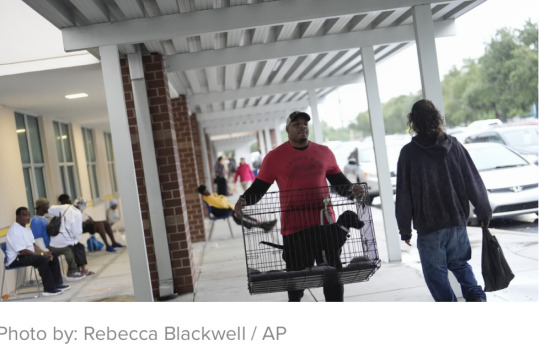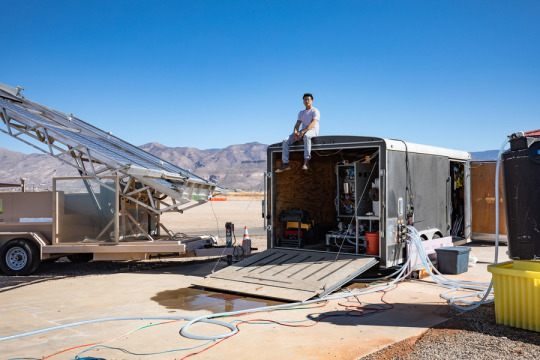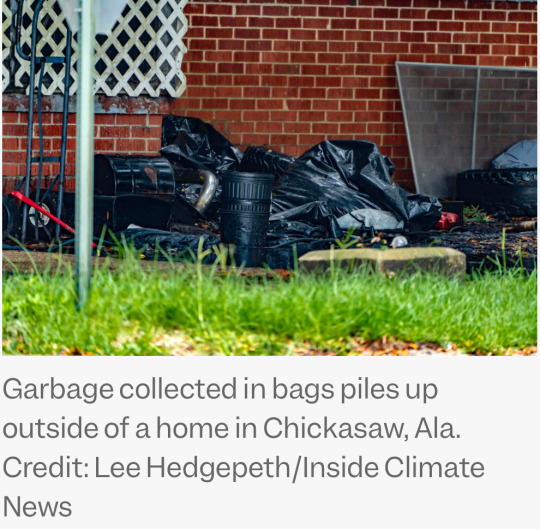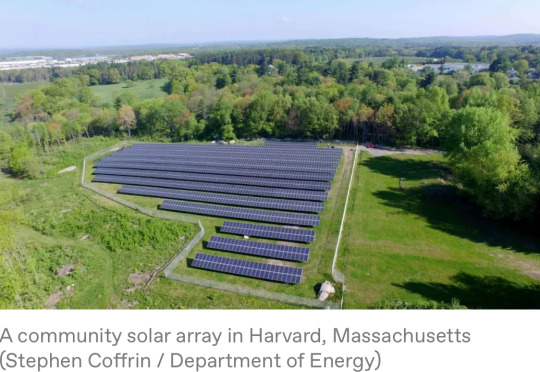#solar panels cost uk
Explore tagged Tumblr posts
Text
Maximising Your Solar Investment: Tips to Boost Energy Efficiency
Investing in solar panels is a smart move for UK homeowners looking to cut electricity costs and reduce their carbon footprint. But how can you make the most of your solar system? In this guide, we’ll explore key strategies to increase savings, boost energy output, and maximise your return on investment (ROI).
Introduction
With rising energy prices and growing environmental concerns, more UK homeowners are turning to solar power as a sustainable and cost-effective solution. However, simply installing solar panels UK isn’t enough — you need to optimise your system to get the best possible savings.
By improving efficiency, reducing energy waste, and using smart energy management strategies, you can maximise your solar investment and see faster financial returns.
In this article, we’ll cover: ✅ How to get the most power from your solar panels ✅ Smart ways to store and use solar energy ✅ How to reduce energy wastage in your home ✅ The best time to use solar energy for maximum savings
By the end of this guide, you’ll know exactly how to boost your solar energy efficiency and get the best ROI from your system.
1. Choose the Right Solar Panel System for Maximum Efficiency
Before even thinking about optimising your energy usage, you need to ensure you have the right solar system for your home.
Key Factors to Consider
Panel Type: Monocrystalline panels offer the highest efficiency (~20–22%) compared to polycrystalline (~15–17%).
System Size: A larger solar panel system produces more electricity, but it must match your household energy consumption.
Battery Storage: Adding a solar battery allows you to store excess energy for later use, reducing reliance on the grid.
Pro Tip:
✅ Choose Tier-1 solar panels from reputable brands like JA Solar, DMEGC, or Trina for maximum efficiency and a longer lifespan.
2. Optimise Solar Panel Placement & Angle
Even the best solar panels won’t perform well if they’re not positioned correctly.
Best Solar Panel Placement in the UK
South-facing roofs get the most sunlight, maximising power output.
East- and west-facing roofs generate slightly less energy but are still highly efficient (~80–90% of south-facing panels).
Roof angle: A tilt of 30–40 degrees is ideal for maximum sun exposure.
What About Shaded Areas?
Shade from trees, chimneys, or nearby buildings can significantly reduce solar efficiency.
Solution: Use power optimisers to minimise shading impact and improve energy yield.
3. Invest in Solar Battery Storage for Maximum Savings
A solar panel battery cost uk allows you to store excess solar energy instead of exporting it to the grid.
How a Solar Battery Saves You More Money
Without a battery: Excess energy is sold to the grid for a small payout (5–15p per kWh under the Smart Export Guarantee).
With a battery: You store and use your own solar energy at night, avoiding expensive grid electricity (which can cost 30p+ per kWh).
Best Solar Batteries in the UK (2025)
Battery Model Capacity (kWh) Estimated Price Lifespan
Pytes 5.12 kWh 5.12 kWh £1,500 — £2,000 10+ years
Fox EP5 5.18 kWh £2,000 — £2,500 10 years
✅ Tip: The return on investment (ROI) for a solar battery is typically 7–10 years, but this can be shorter if energy prices continue to rise.
4. Use Energy-Intensive Appliances During Peak Solar Hours
Solar panels generate the most electricity between 10 AM and 4 PM. To maximise savings, you should run high-energy appliances during these hours.
Best Appliances to Use During Peak Solar Hours
✅ Washing machines & dishwashers ✅ Electric ovens & cookers ✅ Tumble dryers & air conditioning ✅ EV chargers (if you have an electric car)
By timing your energy usage to match solar generation, you reduce the amount of electricity you buy from the grid.
5. Improve Your Home’s Energy Efficiency
Even if you generate plenty of solar power, energy waste can reduce your overall savings. Improving home efficiency ensures that you use less power and save more money.
Simple Ways to Make Your Home More Energy-Efficient
✅ Upgrade to LED bulbs — 90% more efficient than traditional bulbs. ✅ Improve insulation — Proper loft and wall insulation reduces heat loss and lowers electricity use. ✅ Use smart thermostats — Optimises heating and cooling, reducing energy waste. ✅ Unplug unused devices — Appliances on standby mode still consume electricity.
Fact: The average UK home can save up to £500 per year just by improving energy efficiency.
6. Monitor & Optimise Your Solar System with Smart Technology
A ground mount solar panels uk cost monitoring system allows you to track energy production and consumption in real time.
Top Solar Monitoring Apps (2025)
Solis Cloud — Tracks system performance & efficiency.
Fox App — Ideal for Powerwall users, providing real-time energy flow.
Enphase Enlighten — Best for microinverter-based systems.
By monitoring your solar system, you can identify inefficiencies and make adjustments to maximise output.
7. Take Advantage of UK Government Incentives
The UK government offers financial incentives to make solar investments even more attractive.
Key Solar Incentives Available in 2025
Incentive Benefit
Smart Export Guarantee (SEG) Earn 5p-15p per kWh for surplus energy sent to the grid.
0% VAT on Solar Battery Storage Reduced upfront costs on installations.
✅ Tip: Many energy suppliers offer higher SEG rates — shop around to find the best deal!
Conclusion: How to Get the Best ROI from Your Solar Investment
By following these simple strategies, you can increase energy efficiency, maximise savings, and shorten your solar panel payback period.
Key Takeaways
✔ Optimise panel placement & reduce shading ✔ Use a solar battery to store excess energy ✔ Time energy usage during peak solar hours ✔ Improve home efficiency to reduce energy waste ✔ Monitor your system with smart technology ✔ Take advantage of UK solar incentives
🚀 Want to start saving more with solar? Get a free consultation today!
#solar panels#cost of solar panels uk#solar system#solar panels uk price#solar power#solar panels cost uk#are solar panels worth it uk#solar panel#how much solar panels costs uk
0 notes
Text
We urgently need to move away from fossil fuels, but electric vehicles and other green technology can put their own pressures on the environment. That pressure could be eased with a new magnet design, free from rare-earth metals, that was built with AI in just three months. Rare-earth metals are essential components in modern-day gadgets and electric tech – including cars, wind turbines, and solar panels – but getting them out of the ground costs a lot in terms of money, energy, and environmental impact. As a result, technology that doesn't use these metals can help us transition towards a greener future more quickly. Enter UK company Materials Nexus, which has used its bespoke AI platform to create MagNex, a permanent magnet requiring no rare-earth metals.
Continue Reading.
430 notes
·
View notes
Text
Dandelion News - March 22-28
Like these weekly compilations? Tip me at $kaybarr1735 or check out my Dandelion Doodles! This month’s doodles, like every third month, will be free to the public, so take a look!
1. Crucial and heartwarming: see world’s first-ever wild jaguar translocation in Argentina

“Miní[, an offspring of rewilded jaguars,] is the first-ever release of a wild-born jaguar that’s been translocated for conservation purposes. […] Miní has joined two previously captive female jaguars [in a park] where a small, all-male wild population had been dwindling.”
2. Illinois Gov. Pritzker stands up for LGBTQ+ community in fiery HRC speech

“The governor particularly spoke out for transgender youth, saying we must not sacrifice the most persecuted for the most popular. [… “]Bullies respond to one thing, and one thing only, a punch in the face.”
3. The UK’s First ‘Stork Village’ Takes Flight

“For the first time in more than six centuries, white storks are calling Britain home again thanks to a dedicated conservation initiative to save the species. […] At the end of 2024, breeding numbers saw egg-straordinary results with 27 nests and 53 baby storks, doubling the previous year’s numbers.”
4. A quiet shift: The grid is being redefined by household consumers who no longer need it full time

“With rising adoption of rooftop solar, batteries, and electric vehicles, households are gradually altering their relationship with the grid. […] This redefined relationship doesn’t signal rejection — it reflects the growing capacity of households to meet part of their own needs.”
5. Europe’s Wolf Population On The Rise

““The recovery of wolves across human-dominated landscapes of Europe has been continuing during the past decade, with their population growing to over 21,500 individuals by 2022—a 58% increase in a decade,” the authors wrote. [… O]n average wolves killed 0.02% of livestock each year.”
6. Hospitals awarded funding for solar power work

“The investment of £8.5m by state-owned Great British Energy will enable rooftop panels and solar car ports to be installed at [several hospitals]. […] "Together, these panels will generate estimated savings of more than £635,000 a year."”
7. Nebraska Boards Sponsor Grain Bin Rescue Equipment, Training for Fire Departments

“[Nebraska Corn and Soybean boards are] donating two grain rescue tubes and two training sessions to fire and rescue departments in Nebraska. [… T]he initiative aims to equip rural fire and rescue teams with the knowledge and tools to respond to grain bin entrapments effectively.“
8. Sugar beet pulp fibers show potential for nutritional supplements and sustainable plastic alternatives

“New technology can separate the fibers in the sugar beet pulp left over after sugar production. Part of the fiber can be used as a nutritional supplement due to its anti-inflammatory properties[… and a]nother part of the fiber, the cellulose, can be made into components to replace, for example, plastic.”
9. Osmotic Power: The Next Wave of Renewable Energy

“Sweetch Energy’s technology could [produce] around 20 or 25 W/m2, a significant leap compared to the 1 W/m2 achieved by previous membrane devices. Moreover, by utilizing a biosourced material readily available within the industry for their membranes, the company anticipates the cost of materials would be reduced to one-tenth of the current price[….]”
10. Renegade Colorado Farmer Pushes Deeper into Unconventional Agriculture

“The grasshoppers stayed in the [pollinator] strips, and that triggered praying mantis to come in and eat. […] An agrivoltaic system […] has reduced moisture consumption by significant levels[….] “Local food nationwide is how to counter the industrial scale food industry.””
March 15-21 news here | (all credit for images and written material can be found at the source linked; I don’t claim credit for anything but curating.)
#hopepunk#good news#conservation#jaguar#big cats#illinois#us politics#lgbt+#lgbtq#trans rights#stork#britain#birds#electricity#electric grid#solar panels#wolves#wolf#animals#solar energy#agriculture#grain#fire department#sustainability#plastic#renewableenergy#osmosis#clean energy#farming#research
135 notes
·
View notes
Text
BREAKING NEWS -
THE PRINCE OF WALES'S SOCIAL HOUSING PROJECT!
The Prince of Wales will build a £3m social housing development on his own land to tackle homelessness, delivering on his pledge in my interview with him last year that he would "absolutely" put social housing on the Duchy of Cornwall estate.
The development in Nansledan, a suburb of Newquay, the Cornish seaside town famous for its surfing, will include a mix of four-bedroom houses and one-bedroom flats.
The duchy, will supply the land for the project free of charge and cover all construction costs. It will also invest in local infrastructure, including a bus link and connections to electricity, water and superfast broadband.
The new low-carbon homes will feature slate roofs, granite lintels, solar panels, heat pumps and colourful timber windows. It will be built in a “traditional Cornish seaside” style, designed by Adam Architecture and local firm ALA Architects.
Prince William, who launched Homewards UK last year, is looking at more projects on his land. He wants other landowners to follow suit and build more social housing. William is also working with St Petrocs to offer residents “wraparound” support services in addition to housing.
Kensington Palace said: “The prince is delighted that the duchy is using the Homewards approach as inspiration for building this innovative housing project, partnering with St Petrocs to find ways of ultimately getting people into permanent housing.
“It is exactly what he wants to do and for him it’s another example that if we can show people here and in other countries what is possible, maybe others will follow our lead. The prince hopes that every town and city in the country will take inspiration from this project.”
https://archive.ph/2024.02.17-182818/https://www.thetimes.co.uk/article/prince-william-land-social-homes-project-royal-family-vtv7x6vjc
#british royal family#british royals#royalty#royals#brf#royal#british royalty#prince william#the prince of wales#prince of wales#william prince of wales#news
121 notes
·
View notes
Text
By now, we are all aware of the plans of the mad scientists and billionaires to cover (CO2 absorbing) pasture and crop land with onshore wind turbines and solar plants. We are also aware of the intent to remove livestock – cattle, sheep, pigs and chickens – so that we ear bugs and ay land not polluted with solar panels and wind turbines is returned to nature for “rewilding”. We have seen how, in the UK, the Royal Society for the Protection of Birds is a huge sponsor of wind turbines that kill birds.
Here is an article that highlights the continuing war on farmers in the UK – via the inheritance tax that taxes unrealised capital gains – forcing the farms to be sold if there is insufficient cash to pay the inheritance tax calculated by bureaucrats.
Pay particular attention to the verbiage here:
“Inheritors will have to pay 20% of the value of the agricultural and business property above £1million. Having tax exemptions currently costs "about £1bn a year for taxpayers", according to Chief Secretary to the Treasury, Darren Jones.”
“Taxation exemption costs…”!!! Hey Mr Jones, it’s not your effing money! What you are doing is not “closing an exemption”, it is imposing a tax that did not previously exist! The argument here s that “society” is being cheated by people who have accumulated wealth in the value of farms – regardless of the ups and downs of the land owned by the farm or whether the value is in livestock or solar panels/wind turbines!
All taxation is theft. No money paid to the State is the State’s by right – it is a privilege granted by voters.
In my view, VAT is a tax imposed on the country in order for it to join the EU. The UK is no longer in the EU, ergo, VAT should be abolished. It acts as a trade tariff for imports and has increased the cost of living by its percentage rate.
Mind you, it is also my view that government spending, especially on health, needs to be reduced by at least half and that taxation should be simplified to abolish ALL customs and excise duties, tobacco or alcohol taxes, or road taxes, TV license fees and there should be a flat corporate and income tax rate of 15% with NO ALLOWANCES. Vote for me!
9 notes
·
View notes
Text
Luxury Tiny Homes for Sale UK – Downsizing Without Compromise
In recent years, the tiny house movement has captured the imagination of homeowners across the UK. But this isn’t just about cutting costs or living simply—luxury tiny homes for sale UK offer a new way to downsize without compromise. Imagine stylish interiors, high-end features, and eco-conscious design, all within a beautifully compact living space.
If you’re considering a lifestyle shift that combines comfort, affordability, and freedom, luxury tiny homes for sale UK might be exactly what you're looking for.
What Is a Luxury Tiny House?
A luxury tiny homes for sale UK typically ranges from 150 to 400 square feet but is packed with premium finishes, modern conveniences, and custom design features. These homes are often built using high-quality materials and offer features like:
Designer kitchens with integrated appliances
Spa-style bathrooms with rain showers
Smart storage solutions
Underfloor heating and triple-glazed windows
Energy-efficient insulation and solar power options
Stylish interiors crafted with a minimalist aesthetic
Why Choose a Luxury Tiny House in the UK?
1. Affordable Homeownership
With rising property prices, tiny homes provide a more accessible entry into the housing market. You can own a fully equipped home at a fraction of the cost of traditional housing—without sacrificing quality.
2. Eco-Friendly Living
Many luxury tiny homes for sale UK are designed with sustainability in mind. Solar panels, composting toilets, and energy-efficient appliances allow you to reduce your carbon footprint while enjoying modern comforts.
3. Customisable Design
Luxury tiny houses are often tailored to your needs, whether you want a cosy retreat in the countryside, a mobile home for travel, or a compact garden annex.
4. Minimalism with Style
Downsizing doesn’t mean giving up luxury. With clever layouts, multi-purpose furniture, and sleek interiors, you’ll have everything you need—and nothing you don’t.
5. Freedom and Flexibility
Whether you want to live off-grid, move closer to nature, or create a unique Airbnb rental, tiny homes offer versatility and mobility. Some models are towable, others static, but all provide a high level of independence.
Who Are Luxury Tiny Houses Ideal For?
Retirees looking to downsize while maintaining comfort
First-time buyers seeking affordable yet stylish homes
Digital nomads and remote workers craving flexibility
Eco-conscious individuals who want to reduce their footprint
Investors and holiday let hosts exploring the Airbnb market
Where to Find Luxury Tiny Houses for Sale in the UK
You’ll find a growing number of reputable builders and sellers offering bespoke tiny homes across the UK. Whether you're interested in a mobile tiny home, a permanent residence, or a holiday cabin, you can explore:
Custom-built tiny home specialists
Tiny home villages and communities
Off-grid eco developments
Tiny home listings on property websites
Look for providers offering site delivery, planning support, and design consultations to make the process seamless.
Final Thoughts
Luxury tiny houses for sale in the UK are redefining what it means to downsize. You don’t have to sacrifice comfort, style, or quality to live a simpler life. With clever design, sustainable living features, and high-end finishes, these homes offer a lifestyle that’s both affordable and aspirational. Visit more information for your website
2 notes
·
View notes
Text

6 Things to Know About NASA’s Lunar Trailblazer
Feb. 26, 2025
The small satellite mission will map the Moon to help scientists better understand where its water is, what form it’s in, how much is there, and how it changes over time.
Launching no earlier than Wednesday, Feb. 26, NASA’s Lunar Trailblazer will help resolve an enduring mystery: Where is the Moon’s water? After sharing a ride on a SpaceX Falcon 9 rocket with Intuitive Machines’ IM-2 launch — part of NASA’s CLPS (Commercial Lunar Payload Services) initiative — the small satellite will take several months to arrive in lunar orbit.
Here are six things to know about the mission.
1. Lunar Trailblazer will produce high-resolution maps of water on the lunar surface.
One of the biggest lunar discoveries in recent decades is that the Moon’s surface has quantities of water, but little about its nature is known. To investigate, Lunar Trailblazer will decipher where the water is, what form it is in, how much is there, and how it changes over time. The small satellite will produce the best-yet maps of water on the lunar surface. Observations gathered during the two-year prime mission will also contribute to the understanding of water cycles on airless bodies throughout the solar system.
2. The small satellite will use two state-of-the-art science instruments.
Key to achieving these goals are the spacecraft’s two science instruments: the High-resolution Volatiles and Minerals Moon Mapper (HVM3) infrared spectrometer and the Lunar Thermal Mapper (LTM) infrared multispectral imager. NASA’s Jet Propulsion Laboratory in Southern California provided the HVM3 instrument, while LTM was built by the University of Oxford and funded by the UK Space Agency.
HVM3 will detect and map the spectral fingerprints, or wavelengths of reflected sunlight, of minerals and the different forms of water on the lunar surface. The LTM instrument will map the minerals and thermal properties of the same landscape. Together they will create a picture of the abundance, location, and form of water while also tracking how its distribution changes over time and temperature.
3. Lunar Trailblazer will take a long and winding road to the Moon.
Weighing only 440 pounds (200 kilograms) and measuring 11.5 feet (3.5 meters) wide with its solar panels fully deployed, Lunar Trailblazer is about the size of a dishwasher and relies on a relatively small propulsion system. To make the spacecraft’s four-to-seven-month trip to the Moon (depending on the launch date) as efficient as possible, the mission’s design and navigation team has planned a looping trajectory that will use the gravity of the Sun, Earth, and Moon to guide Lunar Trailblazer to its final science orbit — a technique called low-energy transfer.
4. The spacecraft will peer into the darkest parts of the Moon’s South Pole.
Lunar Trailblazer’s science orbit positions it to peer into the craters at the Moon’s South Pole using the HVM3 instrument. What makes these craters so intriguing is that they harbor cold traps that may not have seen direct sunlight for billions of years, which means they’re a potential hideout for frozen water. The HVM3 spectrometer is designed to use faint reflected light from the walls of craters to see the floor of even permanently shadowed regions. If Lunar Trailblazer finds significant quantities of ice at the base of the craters, those locations could be pinpointed as a resource for future lunar explorers.
5. Lunar Trailblazer is a high-risk, low-cost mission.
Lunar Trailblazer was a 2019 selection of NASA’s SIMPLEx (Small Innovative Missions for Planetary Exploration), which provides opportunities for low-cost science spacecraft to ride-share with selected primary missions. To maintain a lower overall cost, SIMPLEx missions have a higher risk posture and lighter requirements for oversight and management. This higher risk acceptance allows NASA to enable science missions that could not otherwise be done.
6. Future missions will benefit from Lunar Trailblazer’s data.
Mapping the Moon’s water supports future human and robotic lunar missions. With knowledge from Lunar Trailblazer of where water is located, astronauts could process lunar ice to create water for human use, breathable oxygen, or fuel. And they could conduct science by sampling the ice for later study to determine the water’s origins.
TOP IMAGE: Sunlight gleams off NASA’s Lunar Trailblazer as the dishwasher-size spacecraft orbits the Moon in this artist’s concept. The mission will discover where the Moon’s water is, what form it is in, and how it changes over time, producing the best-yet maps... Credit: Lockheed Martin Space
LOWER IMAGE: Fueled and attached to an adaptor used for secondary payloads, NASA’s Lunar Trailblazer is seen at SpaceX’s payload processing facility within NASA’s Kennedy Space Center in Florida in early February 2025. The small satellite is riding along on Intuit... Credit: SpaceX

4 notes
·
View notes
Text
That will take some doing. Covid vaccines could be developed so quickly because of years of research on the Mers and Sars viruses. To prepare for the next onslaught we must compile inventories of potentially dangerous strains and tighten global surveillance. We can try to predict which pathogens are most likely to provoke zoonotic mutation. Above all, we can start work now on the early stages of vaccine development for the dangerous diseases we already know. Of course, this will cost money. But compared with other major investments, scientific breakthroughs come cheap. To push at least one vaccine against the 11 epidemic infectious diseases to phase 2 trials has been costed at less than $8.5bn. In her book Disease X, the science writer Kate Kelland estimates that $50bn would pay for a comprehensive vaccine library. To expect that funding to come from the private sector is unrealistic. The work is too expensive and high risk and the returns too uncertain. Philanthropy and public-private partnerships may work. But ultimately it is governments that should foot the bill. Unfortunately, in public policy, pandemic preparedness is all too often relegated to the cash-starved budgets of development agencies or squeezed into strained health budgets. Where such spending properly belongs is under the flag of industrial policy and national security. Biotech is one of the most promising areas of future economic growth, combining research, high-tech manufacturing and service sector work. As the IMF declared: “vaccine policy is economic policy.” And pandemic preparedness belongs under national security because there is no more serious threat to a population. A far larger percentage of the UK died of Covid between 2020 and 2023 (225,000 out of 67mn) than were killed by German bombs in the second world war (70,000 out of 50mn).
Long been my crank opinion that if we want to "reindustrialize" to restore competitiveness with China that biotech would be a good way to do it, going to take China a while to lose the reputation for being the maker of knock-off products and adulterated food, you can deal with that if you want to sell cheap steel or solar panels but for pharma it's more of an issue.
11 notes
·
View notes
Text
At the start of February, Ørsted, the world’s largest offshore wind developer, announced a major scaling back of its operations, exiting wind markets in Portugal, Spain and Norway and cutting both its dividend and its 2030 target for the number of new installations. The announcement followed the firm’s shock decision last November to back out of two major wind projects in New Jersey. Last week, it agreed to sell stakes in four US onshore wind farms for around $300m.
But Ørsted’s troubles are hardly unique. In September 2023, the UK government’s offshore wind auction failed to secure a single project from developers, who argued that the government-guaranteed prices on offer were too low in the face of rising costs. Two months before that, Vattenfall pulled out of a major wind UK development for the same reason. And in February, the German energy giant RWE – which provides 15 per cent of the UK’s power – warned that without more money on offer, the UK’s next auction, opening this month, might just fail again.
These cases are only a handful among many and have come as jarring setbacks for an industry grown accustomed to triumphalism: headlines over recent years have routinely celebrated the plunging cost of renewables and the seemingly unrelenting transition to clean energy advancing around the world. A quick Google of “renewable energy deployment” yields no shortage of charts with impressive upward slopes.
Much of this enthusiasm has centred on a metric called the Levelised Cost of Electricity (LCOE), which represents the average cost per unit of electricity generated over the lifetime of a generator, be it a wind farm or a gas power station. The LCOE has something of a cult status among industry analysts, journalists and even the International Energy Agency as the definitive marker of the transition to clean energy. When the LCOE of renewables falls below that of traditional fossil fuel sources, the logic goes, the transition to clean energy will be unstoppable. If only it was that simple, argues the economic geographer Brett Christophers in his latest book The Price is Wrong: Why Capitalism Won’t Save the Planet.
As Christophers writes: “Everyone, seemingly, has gravitated to the view that, now they are cheaper/cheapest, renewables are primed for an unprecedented golden growth era” that will see them supplant fossil fuels. Doing so will be no mean feat. Despite the vertiginous growth of new renewable capacity in recent years, renewables have scarcely made a dent in the proportion of global power that comes from fossil fuels. The overall share of fossil fuel power in the energy mix has remained broadly stagnant for an astonishing four decades, from 64 per cent in 1985 to 61 per cent in 2022. Critically, the absolute amount of fossil fuel power generated each year – the figure that ultimately matters for the climate – has continued to rise.
In large part, this stems from overall growth in electricity consumption, which will continue apace in the coming decades as millions around the world gain access to electricity and as we race to electrify the economy. Thus, for all their upward momentum, global electricity consumption is still growing faster than solar and wind power is coming online, meaning the gap is widening. To close it, by the IEA’s estimates, the world needs to install 600 GW (gigawatts) of solar and 340 GW of wind capacity every year between 2030 and 2050. By comparison, the UK’s current total installed wind capacity is approximately 30GW, the sixth largest in the world, while Germany’s domestic transition plan implies installing the equivalent of 43 football pitches of solar panels every day to 2050. In short: the task is immense – almost unimaginably so. It is similarly urgent.
Where will the momentum needed to build this clean energy future come from? As Christophers documents in detail, the industry has thus far relied on an array of subsidy and support around the world. Extensive state support is hardly unique to clean energy, much as detractors and climate deniers may like to highlight it: the fossil fuel industry benefited from tax breaks and direct subsidy to the tune of £5.5trn in 2022 according to the IMF. The declining LCOE of renewable energy has been increasingly viewed as an argument for unwinding this government-backed support. As Christophers shows, however, in practice this has proven a near-impossibility. The question he therefore asks is why, in the face of declining costs, subsidies continue to be necessary, and what this tells us about whether the current approach to decarbonisation is fit for purpose.
The answer, Christophers argues, is that we’ve got it all upside down. When it comes to investment in renewable energy, as in anything else, it’s not cheapness that matters. Just take it from the investors themselves, he notes, citing one former JPMorgan investor who described the LCOE as a “practical irrelevance”. What matters instead is profit, and expectations of it.
Despite its simplicity, Christophers’s account is a quietly radical one that contravenes the received wisdom of not only the technocrats, mainstream economists and free marketeers who tout the wonders of the market, but also many on the left, for whom the problem with profits is typically their being far too high. Instead, as he demonstrates, the trouble is that renewable energy is nowhere near profitable enough, and certainly not reliably so, for the market to deliver it with anything like the pace, scale or certainty that is needed.
If the costs of renewables are indeed so low, one might ask, and profits are equal to revenues minus costs, then surely plunging costs should mean higher profits. But Christophers shows that low and unreliable profits are the definitive obstacle to the decarbonisation of the electricity system and, by extension, the wider economy.
The precise answer as to why low costs don’t necessarily translate into high and steady profits in this sector is technically complex and multifaceted, deftly handled by Christophers, a reformed management consultant, over nearly 400 pages of fine detail drawn from company documents, interviews and dense sectoral reports from global energy agencies. Put simply, the core of the problem is that the very features of markets so celebrated by mainstream economics – mediation via the price signal, increasing competition and private investment – are the undoing of a private-sector led transition to clean energy.
For Christophers, the commitment to marketisation in electricity systems is increasingly self-defeating. At the heart of this problem is the so-called “wholesale market” that prevails in many parts of the US and Europe, including the UK. Under this system, generators are paid a single price per unit of electricity for a given period, regardless of whether it is derived from a wind turbine or a coal plant. This price is based on what’s called a “merit order”, with the cheapest sources – generally renewables – being deployed first, followed by as many sources as are needed in order of escalating price. The wholesale is set by the last unit of energy needed to meet demand. In the UK, this is typically gas.
The defining feature of this wholesale pricing system, cast in sharp relief over the period of sky-high energy prices in 2021-2022, is volatility. With a host of factors potentially feeding into the price – from the balance of supply and demand through to global gas prices and geographic location – the swings can be enormous, regularly spiking from double to triple digit prices and back again within a matter of hours. In times of crisis, the figures can become outlandish, with the price of electricity in Texas during the state’s 2021 shock winter storms reaching $9,000 per MWh.
For Christophers, this volatility is nothing short of “an existential threat” to the “bankability” of a renewable project – that is, its ability to secure financing – because it makes profitability so uncertain. Worse still, within a competitive wholesale market, as the proportion of renewable generation in the market grows, and by extension the proportion of time in which renewables drive the wholesale price, the more frequently and strongly prices swing to the lower extreme, a phenomenon known as “price cannibalisation”.
The energy industry and governments rely on an impressive array of methods to circumvent these problems, from financial hedging to feed-in-tariffs, and from mega corporate Power Purchase Agreements with the likes of Amazon and Google to the UK’s “contracts-for-difference”. As Christophers writes: the reality of “liberalised electricity systems such as Europe’s is that, to secure financing, renewables developers ordinarily do everything they can… to avoid selling their output at the market price.”
Thus, despite ultra-high wholesale prices over 2021-2022, many renewables generators failed to enjoy correspondingly high profits, because they had traded the possibility of these certainties in the face of intolerable market volatility. For Christophers, this is the “signal feature” of the liberalised electricity market: that “the hallowed market price… is the one price that renewables operators endeavour not to sell at.”
It is in explaining this apparent contradiction that the book offers its most radical suggestion. Borrowing Karl Polanyi’s concept of a “fictitious commodity”, Christophers ultimately contends that electricity – like land, labour and money, Polanyi’s original trio – is not a commodity in the conventional sense of having been created for sale, and is therefore ill-suited to market exchange and coordination. This incompatibility sits at the root of the spiralling complexity of interventions that policymakers are obligated to make in the name of upholding the freedom of the “market”. The result, in the words of the energy expert Meredith Angwin, is that today’s electricity markets are less market and more “bureaucratic thicket”.
Thankfully, if the forces of capitalism, defined in terms of private ownership and the profit imperative, are fundamentally ill-equipped for this task, then we are not for want of alternatives. Public ownership and financing of energy, if freed from a faux market and the straitjacket of the profit motive, seems an obvious one. Christophers writes that the state is the only actor with “both the financial wherewithal and the logistical and administrative capacity” to take on the challenge of decarbonisation. The trouble though, when all you have is a hammer, is that everything looks like a nail. Thus, in the face of irreconcilable market failures, most policymakers seem only to offer more market-based fudges.
In this context, the tremors in renewable energy investment that we have seen with increasing frequency over the past several months are more than just a blip. They represent a potentially fatal flaw in the prevailing approach to the task of decarbonisation. From the perspective of the climate, every tonne of carbon matters, and every delay is significant. To continue to leave the future of electricity, and by extension global decarbonisation, to the whims of profit-motivated firms, is an intolerable risk. Rome is already burning, and there’s no time left to fiddle.
3 notes
·
View notes
Text
Are solar panels worth it uk
Final Thoughts If you’re looking to cut electricity costs, and contribute to a greener future, are solar panels worth it uk. Thinking of making the switch? Contact Evergreen Power UK today and start saving
0 notes
Text
2023 wrapped
Let's try to sum up the year.
First, the TLDR: a long, drawn out groan of "fuck".
Second, what actually happened.
Remember that blog from a while back where I had six goals and if I did them all then I'd customise my mechanical keyboard? That didn't really work out. The treadmill I bought was a bit of a lemon and had to be sent back. It was one of those machines that's not really built to be used, it's designed to sit in a corner and have the owner look at it and say "I should use that sometime", but they never do. It's documentation all pointed to it breaking down pretty quickly with the amount of use I'd put it through. Not in the documentation was that it switched itself off after 40 minutes without warning. Based on that, I sent it back and got a refund, minus the shipping cost because the refund label I was given wasn't enough for the damn thing's weight. Oh well.
The writing didn't go so well either. Stress ground that to a halt. Two things happened to spread that over the year.
First, I got solar panels installed on my roof. That's a good thing. They're cool and they've cut my energy bill down a lot. But to put the panels in I needed scaffolding in place. It couldn't be put up and put down on the day of installation because a) different companies handled the panels and the scaffolding, and b) in case something went wrong. In my case something minor did go wrong. One of the installers got lazy and instead of securing the main power cable to my outside wall, he zip tied it to guttering downpipe. As I explained on the phone when I complained, this makes a mess of liabilities if I ever need work done on that pipe. Fortunately, a couple of guys came out to fix the cable problem. But no one came to pick up the scaffolding... for three months.
Remember I mentioned that different companies handled the panels and the scaffolding? Well, I could only talk to the panel company as they hired the scaffolding company. It took a lot of phone calls, emails and Official Complaints to find out what happened. The scaffolding company ran into financial trouble and didn't tell anyone for a while. To keep the money coming in they kept installing scaffolding in properties and didn't bother collecting any. They had scaffolding to spare and knew that no one would dare/be able to take down the stuff left behind. Eventually, once the panel company found out what was happening they got the scaffolding company to start coming out and collecting again.
The reason this was a big problem was the scaffolding shut off access to a few things. Two of my windows, and my neighbour's garage. It's a bit of a pain trying to explain all the problems with the scaffolding company hired by the panel company over a text message. But... one day they finally showed and took it away. Stress over. Except.
Except, that day, the very same day, there's an all-hands meeting with work. Everyone tunes into the conference call to hear the news. The company's in trouble. Layoffs in the US office, redundancies in the UK office. The layoffs had already happened by the time of the meeting, the redundancies would be announced after call. When the call ended, I decided to give it ten minutes before declaring myself safe. I got the notification at about the seven minute mark. It was, indeed, fuck.
So, in the US they did layoffs. You're called in, you're told, you leave. No argument, no appeal. In the UK we do redundancies. That's a process about a month long where people are 'at risk' of redundancy and no one is officially fired until the end. For some, there are groups who have the same or similar titles, and the high ups have to decide who in the group to get rid of. For others, like me, you're a one of one, and you'll be gone, unless you can convince them to keep you on. This isn't even the shitty 'interview for the job you're already doing', it's argue that your job should even exist. In my case, the documentation about the redundancy said the plan was that my duties as proofreader would be split up between the writers. Mood: Pickard face palm.
So, got that news. That night I ordered a big box of grease in the form of a pizza for dinner and ate it all while feeling sad. The next day, I got to work. The amount of people at risk of redundancy in the company was so big that there were too many for the HR people to speak to, so we were split into sub-groups based on departments, and those groups would need reperesentatives to come to meetings with HR and then dissiminate the information back to their group. I volunteered to be a rep at is a) meant I was getting all of the information and b) meant I could channel all of anxiety about the process into being a control freak. I made spreadsheets, I kept masses of notes, I wrote up every single meeting. Half the questions I asked in the meetings I had come up with rather than people in my group.
About a quarter way through the redundancy process time frame, I got a meeting with HR to make my pitch. It was really pretty simple: You Need Me. The writers make mistakes, in grammar, in spelling, in simple facts. They don't have the time to research things properly so just it wrong sometimes, and asking another writer to check it won't work out because they won't have the time either. But, I needed some carrot with the stick so offered a solution. My utilisation was down, so I could go on part time hours for a while until things pick up again. They were receptive in the meeting, and asked for a written pitch. I wrote it, read it over, edited it, read it again, then sent it. They accepted. My job was saved, well half saved.
It was a good thing too, as my backup plan feel through. Just before the redundancy process had started, I interviewed at a science journal to do proofreading there. Say what you will about the business model of journals (it's all a bit predatory), but it would have been a big step up from marketing. It was really nice to be taken seriously as a contender for the role, but in the end they decided to go with someone who had basically done the same job at another journal before.
Back to the job stress. I had a half a job. Better than zero job, but still. Finances were tight. I had just enough to pay my bills each month, but that was it. I was not going on holiday or even replacing that crappy treadmill. I got very lucky with the situation. If I hadn't gotten the raise in January the cut to my pay wouldn't have been viable at all. I didn't mention the raise. Man, this is all over the shot, isn't it? Short version: company introduced system to get promotions for most roles, left me (and some other unique jobs) out. So I wrote my own job description for the promotion system in specific way so that they would have to promote me. I gave them plenty of chances to stop me. And the promotion went through in January with a nice raise. And then in May that raised pay was cut in half.
Being on part time isn't all it's cracked up to me. What do you do with all that spare time? Well, you stress out that the rest of the job will be taken away from you, that's what. I played a lot of video games, watched most of the MCU and watched most of Star Wars. The only thing from the MCU I haven't seen is Ms Marvel, I watched every other movie and show. I watched all of Star Wars except the Resistance show set around Episode 7. Only people who have seen all seven seasons of Clone Wars, all four seasons of Rebels, The Mandalorian and The Book of Boba Fett understand what's going in Ahsoka. It's like a soap twenty years long and suddenly plot threads from the entire run are all coming together.
Amongst all the TV watching, I gardened my garden. When I bought my house, there was decking in the back garden. But I quickly discovered that the decking was no good, it was rotting. Far too gone to Ship of Theseus it, I tore it all out, dug out the posts, lifted the gravel that was underneath the decking, lifted the second layer of gravel that was under the first, broke up some random paving stones that were in the corner, and cleared the whole area down to the mud. That took months of work. I filled my car three times with wood for disposing of and filled a four-tonne skip with the gravel and rocks. After the garden was clear, I got fresh gravel and membrane and covered it all over.
When November came around, I did NaNoWriMo again. I wasn't aiming for the full 50k though. It had been months since I'd tried writing and really I didn't have enough story to need that many words. So I went for writing every day. Late in the month I got sick, my first cold in four years. That knocked me pretty hard, so there was one day where I only managed 98 words. But I did manage to write every day, and a couple days into December I finished the first draft of the book I've been working on since 2019. It's gotten away from me a bit, it's 322,000 words long. I may try to cut it down to one big epic novel, or I may keep the length but split it out into a series of novellas. We'll see how editing goes.
That brings us to about now. Christmas is soon, and for the first time we're skipping presents. I'm actually relieved, I had no idea what to get anyone. Last day of work is tomorrow, then it's Christmas break.
This year has been stressfull. I'm seeing more grey hairs in the mirror than before. But it could have been a lot worse.
2024 is actually looking up. Going to do an editing pass of the mammoth novel, got a plan to do it in 100 days. Through a confluence of events, including metaphorically finding bodies stuffed in a cupboard, I'm going to be back at full time at work, so money will be okay again. I've got a plan to keep myself organised for the year, it involves a whiteboard and a physical diary. I'll do another blog later to explain that.
2 notes
·
View notes
Text
“Finally, the tables are starting to turn.” - Tracy Chapman
2 notes
·
View notes
Text
It Begins...
"I've applied for a school in the Falklands", Sara tells me. ".... Huh!? Oh? Right... OK", this comes as a bit of a shock to me, we've previously spoken about the possibility of us returning back up north, where the quality of life is better than where we currently are, just outside of 2023's Worst Place To Live, Luton, and where the cost of living is significantly cheaper, but at the same time, I was also somewhat unsurprised, Sara has always had itchy feet (I'm talking about a desire to travel, not a long undiagnosed skin condition) and was ready for a new school to teach at.
We'd previously visited an island with a small population for her to attend an interview weekend, where partners were also invited, and please, do read the next bit in air-quotes, with as much sarcasm as you can muster, "but partners aren't being interviewed, just invited so they can get a feel for the island", sure Jan... and just days before the 2020 COVID-19 lockdown measures were introduced in the UK, we visited the tiny island of Sark in the Channel Islands.

Not only is Sark a tiny island, it also has a tiny population of about 500 people, where people are outnumbered by the sheep, and the coastline is frequented by funny looking black and white birds (just remember this information for later) as puffins can be spotted on the sheer coastal edges of the island in Spring.
During our time on Sark, when Sara wasn't preparing a lesson to give to her potential future class, we went up and down their bustling high street, avoiding the local traffic of tractors, horse and carts and bicycles...there are no cars allowed on Sark (despite how much my friend Victoria keeps suggesting that if you squint, you could mistake a sports car for a small tractor), not that you would need a car given the size of the island! We also had a lovely curry at the seigneur's home with the other candidates, headteacher of the school and his wife, and a few local residents, including the locum GP, who I may have landed in hot water when I was "absolutely not being interviewed" by the island's vicar and his wife.
The current seigneur of Sark is the delightful Christopher Beaumont, the 23rd person to take up the mantle, a former officer in the British Army, but despite his highfalutin sounding status is down to earth, and happy to chat away with visitors to his beautiful gardens, especially about his newly installed solar panels and electric tractor (the first of it's kind on Sark!)

Sadly, it wasn't to be for our dream of a few quiet years on Sark, and we returned to empty streets, loo roll shortages and queues outside supermarkets, as we took our singular government approved walk of the day. Life moved on, just day after day after sodding day. The more things changed, the more things stayed the same.

There were other attempts to move to Sark, the teacher who did get the job decided it wasn't for them and returned to mainland UK. I guess choosing small island life requires a certain kind of hardiness, pig headedness and a desire to be part of a small community who will know everything about you after a certain amount of time. We have those qualities (we hope), but again, the job was offered to another applicant.
So after a couple of attempts of moving to one small island, and it not being successful, I pessimistically assumed it would be the same here, Sara would go for the interview, impress the panel, but there would just be that one sodding person with a smidge more experience, who would get the job and leave us stuck on rainy Brexit island.
The big day came, Sara set off to London for the interview, you see, whilst for Sark they flew us to Guernsey and then put us on the cute little ferry to the small island, the Falklands is a 16 hour flight across the Atlantic, and a bit far to go for an interview, so the interview panel came to the UK, at Falkland House, the Falkland Islands London address, where you can visit to discuss all manner of things, so long as those questions are about the Falkland Islands. Of course, things didn't go smoothly, as her tube decided to stop in the middle of a tunnel between stations, unable to contact the office to say she was delayed as this was a line that did not yet have 4G signal installed throughout, but she did make her interview in the nick of time, and on exit was told she'd hear back within a week.

At this point my pessimism had kicked in. They had clearly given the job to someone else, and we were doomed for another year in the London commuter belt. Another year of eating fish fingers whilst watching Pointless. Another year of breathing in the polluted air from the main road we lived next to. Another year of...
"ring ring¹"... Sara's phone is ringing, it's a +500 number from The Falkland Islands... I listen in...
"Hi, is that Sara?", asks the caller, she confirms, and the voice on the other end replies, "Sorry about the delay in getting back to you, when we arrived we needed to have a week to rest from the exhaustion of flying and to have a think about the candidates we saw. We were really impressed with your"... I could sense the "but", again, I'm a pessimist by nature... "and we'd like to offer you the position of class teacher at the Infant and Junior School starting in September" - for once, my natural glass half empty, cheery outlook on life, was unfounded.
I went to Tesco to get cake to celebrate the news, although the choices were rubbish and I came back with mini Millionaires Shortbread bites rather than actual cake, but now we had to let it sink in that we were going to have a very big journey ahead of us.
What follows is that journey²...
¹it didn't actually go "ring ring", we're millennials and as such our phones are permanently on mute, and just went "vvvvvvb vvvvvvb" but that would have looked like a cat walked across my keyboard if I'd put that.
²It's worth noting up to now, this has mostly been about Sara's journey, but from hereon this will be a shared journey
3 notes
·
View notes
Text
Dandelion News - October 8-14
Like these weekly compilations? Tip me at $kaybarr1735 or check out my Dandelion Doodles on Patreon!
1. All 160 dogs at Florida shelter found homes ahead of Hurricane Milton

“[The shelter] offered crates, food and anything else the dogs would need in exchange for the animals to spend just five days with the foster parents if the human didn't want to keep them for longer. […A]fter about a day of receiving around 100 messages every 30 minutes, Bada said, all 160 were gone from the shelter and in safe and warm homes.”
2. Restoring Ecosystems and Rejuvenating Native Hawaiian Traditions in Maui

“[Volunteers] are restoring water flow to the refuge, removing invasive species, and restoring a loko iʻa kalo using ʻike kūpuna, ancestral knowledge. […] This human-made ecosystem will provide food for community members and habitat for wildlife while protecting coral reefs offshore.”
3. Solar-powered desalination system requires no extra batteries

“In contrast to other solar-driven desalination designs, the MIT system requires no extra batteries for energy storage, nor a supplemental power supply, such as from the grid. […] The system harnessed on average over 94 percent of the electrical energy generated from the system’s solar panels to produce up to 5,000 liters of water per day[….]”
4. Threatened pink sea fan coral breeds in UK aquarium for first time

“The spawning is part of University of Exeter Ph.D. student Kaila Wheatley Kornblum's research into the reproduction, larval dispersal and population connectivity of Eunicella verrucosa. […] Pink sea fans are believed to have been successfully bred by only one other institution, Lisbon Oceanarium, in 2023.”
5. Tiny 'backpacks' are being strapped to baby turtles[….]

““We analysed the data and found that hatchlings show amazingly consistent head-up orientation – despite being in the complete dark, surrounded by sand [… and] they move as if they were swimming rather than digging[…. This new observation method is] answering questions about best conservation practices,” says Dor.”
6. New California Law Protects Wildlife Connectivity

“A new state law in California will instruct counties and municipalities to conserve wildlife corridors when planning new development. […] This could entail everything from creating wildlife crossings at roads or highways, employing wildlife-safe fencing, or not developing on certain land.”
7. ‘I think, boy, I’m a part of all this’: how local heroes reforested Rio’s green heart

“By 2019, [the program] had transformed the city’s landscape, having trained 15,000 local workers like Leleco, who have planted 10m seedlings across […] roughly 10 times the area of New York’s Central Park. Reforested sites include mangroves and vegetation-covered sandbars called restinga, as well as wooded mountainsides around favelas.”
8. Alabama Town Plans to Drop Criminal Charges Over Unpaid Garbage Bills

““Suspending garbage pickup, imposing harsh late penalties and prosecuting people who through no fault of their own are unable to pay their garbage and sewage bills does not make payment suddenly forthcoming,” West said. [… The city] has agreed to drop pending criminal charges against its residents over unpaid garbage bills.”
9. New Hampshire’s low-income community solar program finally moves forward

“The state energy department is reviewing seven proposals for community solar arrays that will allocate a portion of their bill credits to low-income households. […] New Hampshire’s strategy of working with utilities to automatically enroll households that have already been identified streamlines the process.”
10. The Future Looks Bright for Electric School Buses

“EPA has awarded about $3 billion in grants from the infrastructure law, which paid to replace about 8,700 buses. Of those, about 95 percent are electric. [… Electric buses are] cheaper to operate and require less maintenance than diesel buses and will soon be at cost parity when looking at the lifetime cost of ownership[….]”
October 1-7 news here | (all credit for images and written material can be found at the source linked; I don’t claim credit for anything but curating.)
#hopepunk#good news#dogs#hurricane milton#florida#animal shelters#foster dog#hawaii#hawaiʻi#maui#solar#water#solar energy#coral#endangered species#coral reef#turtles#sea turtle#technology#wildlife#habitat#nature#california#rio#south america#reforestation#poverty#anti capitalism#solar panels#electric vehicles
200 notes
·
View notes
Text
Praesodymium Hexafluoroacetylacetonate Market, Global Outlook and Forecast 2025-2032
Praesodymium Hexafluoroacetylacetonate Market Size, Demand & Supply, Regional and Competitive Analysis 2025-2031
Praesodymium Hexafluoroacetylacetonate is a light green powder with the chemical formula C15H3F18O6Pr and CAS number 47814-20-0. It is a metal-organic compound widely utilized in the production of solar energy materials, water treatment solutions, and electronic thin films. Due to its superior chemical properties, it is an essential precursor in chemical vapor deposition (CVD) and atomic layer deposition (ALD) processes for microelectronics and advanced material coatings. The demand for this compound has surged due to its growing applications in semiconductor technologies and renewable energy sectors.
Market Size
The global Praesodymium Hexafluoroacetylacetonate market was valued at USD 38 million in 2023 and is projected to reach USD 61.02 million by 2030, registering a CAGR of 7.00% during the forecast period.
Download a free Sample Report PDF
North America held a market size of USD 9.90 million in 2023, with a projected CAGR of 6.00% from 2025 through 2030.
The Asia-Pacific region is expected to exhibit the highest growth, driven by increasing demand from China, Japan, and South Korea in the electronics and semiconductor industries.
Europe follows closely, with a strong presence in specialty chemical applications and advanced material research.
Market Dynamics (Drivers, Restraints, Opportunities, and Challenges)
Drivers
Expanding Semiconductor Industry: The growing adoption of microelectronics, nanotechnology, and thin-film deposition techniques fuels demand for Praesodymium Hexafluoroacetylacetonate.
Renewable Energy Expansion: With increasing investments in solar energy and water purification technologies, the demand for high-performance materials is rising.
Advancements in Chemical Vapor Deposition (CVD) and ALD Technologies: The requirement for high-purity materials in semiconductor manufacturing has accelerated market growth.
Restraints
High Cost of Production: The complex synthesis process and high purity requirements contribute to elevated costs.
Stringent Environmental Regulations: Government policies related to hazardous material handling and disposal may hinder market expansion.
Opportunities
R&D in Nanoelectronics and Advanced Coatings: The adoption of nanotechnology-based coatings in aerospace and defense applications presents new avenues for growth.
Expansion into Emerging Markets: Asia-Pacific and the Middle East hold untapped potential due to increasing investments in smart electronics and sustainable materials.
Challenges
Supply Chain Disruptions: Geopolitical tensions and trade restrictions can impact the availability of rare earth elements.
Limited Raw Material Sources: The dependency on a few regions for rare earth extraction can create price fluctuations.
Regional Analysis
North America
Market Size (2023): USD 9.90 million
Growth Rate: 6.00% CAGR (2025-2030)
Major End-Users: Semiconductor manufacturers, water treatment facilities, and solar panel producers.
Key Players: American Elements, Strem Chemicals.
Europe
Strong demand for advanced coatings and chemical catalysts.
Leading countries: Germany, UK, France.
Increasing investments in green energy and specialty chemicals.
Asia-Pacific
Fastest-growing region, led by China, Japan, and South Korea.
High demand in electronics, 5G infrastructure, and semiconductor manufacturing.
Key Market Contributors: BOE Technology, Samsung, and major rare earth suppliers.
South America
Emerging market for industrial applications and chemical processing.
Brazil and Argentina are focusing on technology-driven industries.
Middle East & Africa
Expanding market due to investments in water treatment technologies.
UAE and Saudi Arabia emerging as potential markets for high-performance materials.
Competitor Analysis
Key Companies
American Elements - Leader in high-purity metal compounds.
ABCR - Specializes in chemical synthesis and material science.
A2B Chem - Supplier of advanced chemical materials.
BOC Sciences - Major provider of specialty chemicals for research.
Gelest - Innovator in organometallics and semiconductor materials.
Market Segmentation (by Type)
98% Purity
99% Purity
Greater Than 99.9% Purity
Other
Market Segmentation (by Application)
Chemical Industry
Electronics
Other
Geographic Segmentation
North America (USA, Canada, Mexico)
Europe (Germany, UK, France, Russia, Italy, Rest of Europe)
Asia-Pacific (China, Japan, South Korea, India, Southeast Asia, Rest of Asia-Pacific)
South America (Brazil, Argentina, Columbia, Rest of South America)
Middle East and Africa (Saudi Arabia, UAE, Egypt, Nigeria, South Africa, Rest of MEA)
FAQ
What is the current market size of the Praesodymium Hexafluoroacetylacetonate Market?
➣ As of 2023, the global market size was USD 38 million, projected to grow to USD 61.02 million by 2030 at a CAGR of 7.00%.
Which are the key companies operating in the Praesodymium Hexafluoroacetylacetonate Market?
➣ Notable companies include American Elements, ABCR, A2B Chem, BOC Sciences, Gelest, and Strem Chemicals.
What are the key growth drivers in the Praesodymium Hexafluoroacetylacetonate Market?
➣ Key drivers include growth in semiconductor manufacturing, renewable energy expansion, and advancements in CVD and ALD technologies.
Which regions dominate the Praesodymium Hexafluoroacetylacetonate Market?
➣ Asia-Pacific leads the market due to high demand from the electronics and semiconductor industries, followed by North America and Europe.
What are the emerging trends in the Praesodymium Hexafluoroacetylacetonate Market?
➣ Emerging trends include nanotechnology applications, advanced coatings in aerospace, and increasing use in 5G infrastructure.
Get The Complete Report &TOC
CONTACT US:203A, City Vista, Fountain Road, Kharadi, Pune, India - 411014 International: +1(332) 2424 294 Asia: +91 9169162030 Follow Us On linkedin :- https://www.linkedin.com/company/24chemicalresearch/ About 24Chemical Research:24chemicalresearch was founded in 2015 and has quickly established itself as a leader in the chemical industry segment, delivering comprehensive market research reports to clients. Our reports have consistently provided valuable insights, aiding our clients, including over 30 Fortune 500 companies, in achieving significant business growth.
0 notes
Text
The UK government minister for “net zero” and climate cultism has overridden the wishes of local residents and awarded a (“exclusive, no compete”?) contract to extend an existing wind turbine forests and solar panel plantation in prime, food producing and CO2 reducing, Lincolnshire, UK, farmland.
The value of the contracts for past wind and solar is not available, nor is the value of the latest contract. What is known is that the company awarded the contract is Ecotricity, whose owner, Dale Vince, has donated £5.4 million to Labour since 2022.
We also know that wind and solar cost at least 5 times more than natural gas to generate electricity and aside from the environmental footprint from forests of wind turbines and solar panel plantations, there is the collateral damage to wildlife, miles of access roads and miles of connections have to also be built.
How much food was being produced by the existing land seized by politicians to pursue uneconomic and harmful renewable projects which prevent the reduction of CO2 by crops via photosynthesis? No data available.
The overall project and this extension have been bubbling along for a few years. From 2023:
4 notes
·
View notes